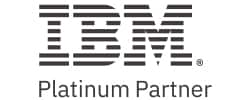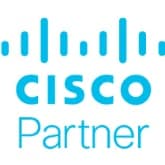May 10, 2024
Legacy Application Modernization Accelerates Business Velocity
By updating their apps, organizations can innovate more effectively, improve the customer experience and gain an edge over their competitors.
For many organizations, modernizing their legacy applications ranks near the top of their IT priorities, right alongside cybersecurity and network performance. And yet, one of the major problems facing IT departments is a shortage of time available for application development and modernization.
An approach of continuous application modernization allows organizations to proactively manage enhancement, costs and security throughout the application lifecycle. Even more important, effective app modernization is a cornerstone of digital transformation, unlocking business benefits including better performance, less risk and new forms of value. It can also lead to lower development and maintenance costs, in part by introducing increased automation.
Services and engagements from a trusted third-party partner can help organizations embed DevSecOps concepts into their processes. CDW’s Strategic Application Modernization Assessment (SAMA) offering and Agile Software Factory service have helped many companies implement these concepts on their way to achieving the benefits of a modernized application environment.
Learn how your organization can modernize its applications to be more efficient and productive.
For many organizations, modernizing their legacy applications ranks near the top of their IT priorities, right alongside cybersecurity and network performance. And yet, one of the major problems facing IT departments is a shortage of time available for application development and modernization.
An approach of continuous application modernization allows organizations to proactively manage enhancement, costs and security throughout the application lifecycle. Even more important, effective app modernization is a cornerstone of digital transformation, unlocking business benefits including better performance, less risk and new forms of value. It can also lead to lower development and maintenance costs, in part by introducing increased automation.
Services and engagements from a trusted third-party partner can help organizations embed DevSecOps concepts into their processes. CDW’s Strategic Application Modernization Assessment (SAMA) offering and Agile Software Factory service have helped many companies implement these concepts on their way to achieving the benefits of a modernized application environment.
Learn how your organization can modernize its
applications to be more efficient and productive.

The events of the past few years have forced companies across industries to embrace digital transformation, whether they were ready for the change or not. The rise of remote and hybrid work led to the rapid adoption of collaboration platforms, productivity suites and videoconferencing hardware, and IT personnel and infrastructure became nearly universally recognized as mission-critical drivers of business outcomes.
As companies’ digital transformation environments have matured, business and IT leaders continue to push to keep pace with their competitors. This doesn’t necessarily mean always upgrading to the latest, greatest hardware or investing millions of dollars in research and development for game-changing artificial intelligence platforms. But it does mean constantly assessing existing tech solutions and making ongoing improvements to meet the goals of the business.
Rather than obsessing over top-of-the-line infrastructure, IT and business leaders are focused on increasing their ROI.
72%
The percentage of IT decision-makers respondants who say that data volumes are growing faster than their ability to manage them
Source: Insight, “The Path to Digital Transformation,” February 2023
Rather than boasting about product specs, they are relentlessly pursuing the best possible customer experience. And instead of building bigger and better data centers, they are finding ways to dramatically decrease time to impact and radically improve efficiency.
More than ever, digital transformation is about business outcomes, not technology.
There are, of course, a number of ways to upgrade IT environments to better support the business. But one of the most impactful changes, many organizations find, is to modernize their application environments. Too often, legacy applications bog down technology teams with maintenance tasks, drag down performance and increase operating expenses, preventing organizations and their employees from achieving their full potential. By contrast, a more modern approach that leverages DevSecOps practices can help organizations to increase velocity, shorten resolution times, improve customer satisfaction and spur innovation.
Application modernization is an intensive process that requires a thorough assessment of existing environments; significant internal or third-party expertise; and detailed plans to migrate, retire, update or replace the applications that are critical to business success. But when done right, an app modernization effort is often the shortest path to helping organizations achieve their most important digital transformation goals.
Learn how your organizationc can modernize its
applications to be more efficient and productive.
The Digital Transformation and DevSecOps Landscape
The events of the past few years have forced companies across industries to embrace digital transformation, whether they were ready for the change or not. The rise of remote and hybrid work led to the rapid adoption of collaboration platforms, productivity suites and videoconferencing hardware, and IT personnel and infrastructure became nearly universally recognized as mission-critical drivers of business outcomes.
As companies’ digital transformation environments have matured, business and IT leaders continue to push to keep pace with their competitors. This doesn’t necessarily mean always upgrading to the latest, greatest hardware or investing millions of dollars in research and development for game-changing artificial intelligence platforms. But it does mean constantly assessing existing tech solutions and making ongoing improvements to meet the goals of the business.
Rather than obsessing over top-of-the-line infrastructure, IT and business leaders are focused on increasing their ROI. Rather than boasting about product specs, they are relentlessly pursuing the best possible customer experience. And instead of building bigger and better data centers, they are finding ways to dramatically decrease time to impact and radically improve efficiency.
More than ever, digital transformation is about business outcomes, not technology.
72%
The percentage of IT decision-makers respondants who say that data volumes are growing faster than their ability to manage them
Source: Insight, “The Path to Digital Transformation,” February 2023
There are, of course, a number of ways to upgrade IT environments to better support the business. But one of the most impactful changes, many organizations find, is to modernize their application environments. Too often, legacy applications bog down technology teams with maintenance tasks, drag down performance and increase operating expenses, preventing organizations and their employees from achieving their full potential. By contrast, a more modern approach that leverages DevSecOps practices can help organizations to increase velocity, shorten resolution times, improve customer satisfaction and spur innovation.
Application modernization is an intensive process that requires a thorough assessment of existing environments; significant internal or third-party expertise; and detailed plans to migrate, retire, update or replace the applications that are critical to business success. But when done right, an app modernization effort is often the shortest path to helping organizations achieve their most important digital transformation goals.
Learn how your organization can modernize its
applications to be more efficient and productive.
The State of Digital Transformation
87%
The percentage of IT decision-makers who agree that their organizations need to modernize critical applications for success
Source: Insight, “The Path to Digital Transformation,” February 2023
60%
The percentage who say that operational efficiency is the top objective of their application modernization efforts
Source: Insight, “The Path to Digital Transformation,” February 2023
53%
The percentage who report that the top challenge associated with modernization is creating a plan for application modernization rationalization
Source: Insight, “The Path to Digital Transformation,” February 2023
The State of Digital Transformation
87%
The percentage of IT decision-makers who agree that their organizations need to modernize critical applications for success
Source: Insight, “The Path to Digital Transformation,” February 2023
60%
The percentage who say that operational efficiency is the top objective of their application modernization efforts
Source: Insight, “The Path to Digital Transformation,” February 2023
53%
The percentage who report that the top challenge associated with modernization is creating a plan for application modernization rationalization
Source: Insight, “The Path to Digital Transformation,” February 2023
- KEY BUSINESS OUTCOMES
- APPLICATION MODERNIZATION IN ACTION
- TOOLS AND PROCESSES
At a high level, application modernization is the process of updating and improving legacy applications or building entirely new ones, with the goal of enabling the organization to better serve customers, support innovation and gain an edge over competitors. Three of the most common reasons that businesses modernize their applications are to increase velocity, improve the user experience and enhance efficiency. However, application modernization initiatives can also help organizations to achieve other valuable outcomes.
INCREASE BUSINESS VELOCITY: App modernization promotes efficient use of resources. Legacy applications and waterfall development processes often require teams to engage in extensive rework. By contrast, DevSecOps processes allow teams to rapidly release updates and modernized apps that leverage containerization to promote simplicity and automation. App modernization can also improve the experiences of users and customers.
EXTEND THE LIFE OF LEGACY APPS: Within many organizations, legacy applications are holding back business initiatives and processes, but leaders may feel hamstrung because their organizations depend on these apps. Through app modernization, organizations can leverage and extend the features of their legacy applications by making them available as services via application programming interfaces.
Click Below to Continue Reading
IMPROVE SECURITY: As part of their app modernization efforts, many organizations adopt a DevSecOps approach, in which security is a foundational element of the development process. In these environments, security testing is automated, and an app cannot be pushed through to the next stage of development or production until problems are remediated.
REDUCE COSTS AND MAXIMIZE ROI: Outdated applications are expensive to maintain, not only taxing infrastructure resources but also sometimes requiring organizations to hire employees with specialized skills to maintain them. A “lift and shift” migration to the cloud typically will be very expensive over time, whereas modernizing applications for new platforms can reduce ongoing costs.
ATTRACT AND RETAIN TALENT: Many organizations struggle to attract and retain IT professionals, but companies have especially felt the impact of worker shortages in recent years. Employees don’t want to be bogged down with rote tasks, and app modernization can spur the sort of innovation that makes a company an attractive place to work.
OPTIMIZE OPERATIONS: Legacy applications and waterfall development processes are typically inefficient, requiring extensive rework on the part of development teams. By contrast, app modernization efforts that leverage DevSecOps processes allow organizations to rapidly update and modernize their apps over time. Also, a modernized app environment that incorporates containerization promotes simplicity and automation, leading to better performance and a more efficient use of resources.
Services from CDW can help organizations to turbocharge their application modernization initiatives.
DevSecOps assessment: CDW’s seasoned solution architects bring an expert eye to organizations’ DevSecOps environments. A DevSecOps assessment results in a better understanding of existing employees’ skill sets, how current practices do or do not align with a DevSecOps approach and what barriers stand in the way of successful DevSecOps implementation.
Software design and consulting: With consulting engagements on everything from hyperscale application architectures to agile processes and product development, CDW can help organizations adopt and implement modern software practices such as continuous integration/continuous delivery and agile delivery and also help internal staffers to address technical debt and execute digital transformation strategies.
Managed services: Through CDW’s managed services offerings, organizations can continue to optimize their application environments over time, long after the launch of initial application efforts. CDW’s managed services team provides ongoing review, support and managed consistency services to proactively deliver management recommendations for business-critical applications.
Third-Party Partnerships: CDW partners with leading third-party technology providers to bring cutting-edge solutions and specialized expertise to application modernization projects. These partnerships give organizations access to a broad range of technologies and services that are tailored to meet their unique business needs.
Containerization: Containers allow organizations to not only virtualize their applications but to break them into individual pieces that can be delivered and patched faster than ever before. This, in turn, supports agile development processes and applications that are truly cloud-native.
Cybersecurity: Cybersecurity has always been a top priority for IT teams, but the rise of ransomware over the past several years has highlighted security as a business-critical concern. As organizations evolve their cloud platforms and DevSecOps strategies, it can be difficult to find security solutions that meet the needs of the new infrastructure. CDW has years of experience implementing industry-leading cloud and container security solutions.
Click Below to Continue Reading
The 6 R’s of Strategic Application Modernization Assessment (SAMA)
A Strategic Application Modernization Assessment, or SAMA, from a trusted partner such as CDW can help organizations to determine the best path forward for modernizing their legacy app environments. For each application, a SAMA engagement results in recommendations concerning six potential outcomes:
Refactor: By refactoring (or “rearchitecting”) their applications for optimal placement in public cloud environments, organizations can often improve availability and reliability.
Rewrite: Rewriting (or rebuilding) an application from scratch is a more resource-intensive option, but it may make sense in the case of older applications that would otherwise be difficult to migrate.
Replatform: By contrast, replatforming an application is typically a more straightforward process in which changes are made, for example, to the way a program interacts with databases to promote automation and elasticity.
Retire: In some cases, organizations may find that it is simply not worth holding on to particular applications. This is especially true if there is now a reliable, cost-effective off-the-shelf application that performs a similar function.
Rehost: This is the simplest option for application migration, involving a “lift and shift” with no significant application or infrastructure changes. However, this may cause organizations to miss out on the performance and scalability benefits of the public cloud.
Retain: Finally, some legacy applications may be retained as-is. Often, this is a temporary strategy that gives organizations more time to follow one of the other five application modernization strategies.
Broadly speaking, app modernization efforts can be broken down into four stages: assessment, migration, modernization and optimization. At each of these stages, organizations must seek out and implement the tools and practices that will lead to success.
However, most organizations are not equipped to undertake a major app modernization initiative on their own. Third-party engagements such as CDW’s SAMA offering and Agile Software Factory service are both designed to help companies access and implement the right tools and practices best suited to their own individual application environments. In a SAMA engagement, CDW’s experts will help business and IT leaders determine their best options for modernizing legacy application environments, presenting plans and recommendations for potential paths forward such as refactoring, replatforming and rehosting (see sidebar: “The 6 R’s of Strategic Application Modernization Assessment”). The Agile Software Factory is a more holistic approach, focused on infusing Lean-Agile principles into a company’s culture, organizational design, funding and flow of work. Through this service, CDW’s experts also help organizations apply DevSecOps automation and containerization technology and best practices throughout their application environments.
Assessment: An assessment can make or break an app modernization effort. Automation is essential at the assessment stage, as humans can miss opportunities for modernization and slow down the process. A holistic assessment engagement, such as CDW’s SAMA, can help organizations to analyze their code, evaluate it against modernization goals, and provide a custom roadmap that leads to applications that are more scalable and easier to maintain. During a SAMA engagement, hundreds or even thousands of applications can be analyzed using CDW’s proprietary reporting and analysis technologies. To fuel digital transformation, it is important that assessments look at environments from a software standpoint rather than taking an infrastructure-centric approach.
Click Below to Continue Reading
Migration: Business and IT leaders sometimes overlook the importance of selecting the right cloud provider to host their modernized applications. Too often, organizations make this choice by default, simply continuing to use a public cloud environment with which they are familiar. But in a 2022 report on application modernization and digital transformation, IBM Consulting notes that this decision should be based on a provider’s ability to deliver necessary services. “Avoid the common mistake of considering only one hyperscaler and designing your program to fit its offerings,” IBM Consulting advises. “You’re more likely to succeed if you treat the hyperscaler as an enabler of your strategy rather than a menu of options you choose from.”
Modernization: Once organizations have assessed their application environments and decided where their modernized apps will live, they must do the difficult work of creating cloud-ready applications that meet their needs. Typically, this process relies heavily on the use of containers, packages of software that are bundled together across application code to enable seamless deployment across multiple environments. Other important approaches include microservices, which makes development more agile by allowing each core function to be built independently; automation, which can streamline tasks such as deployment and diagnostics; and artificial intelligence, which can help organizations to mine insights from their applications.
Optimization: Anyone who has worked in IT for long enough knows that the success or failure of an initiative often depends on how well it is sustained over time. Application monitoring tools can help organizations to ensure that their modernized app environments continue to perform as expected and meet users’ needs, and managed services offerings can help reduce the burden on internal IT staffers. To support an agile, digitally transformed workplace, organizations must ensure alignment between their new application environments and their people, processes and governance. They must also closely track key performance indicators and adjust their practices over time to address changes in performance.
- KEY BUSINESS OUTCOMES
- APPLICATION MODERNIZATION IN ACTION
- TOOLS AND PROCESSES
At a high level, application modernization is the process of updating and improving legacy applications or building entirely new ones, with the goal of enabling the organization to better serve customers, support innovation and gain an edge over competitors. Three of the most common reasons that businesses modernize their applications are to increase velocity, improve the user experience and enhance efficiency. However, application modernization initiatives can also help organizations to achieve other valuable outcomes.
INCREASE BUSINESS VELOCITY: App modernization promotes efficient use of resources. Legacy applications and waterfall development processes often require teams to engage in extensive rework. By contrast, DevSecOps processes allow teams to rapidly release updates and modernized apps that leverage containerization to promote simplicity and automation. App modernization can also improve the experiences of users and customers.
EXTEND THE LIFE OF LEGACY APPS: Within many organizations, legacy applications are holding back business initiatives and processes, but leaders may feel hamstrung because their organizations depend on these apps. Through app modernization, organizations can leverage and extend the features of their legacy applications by making them available as services via application programming interfaces.
Click Below to Continue Reading
IMPROVE SECURITY: As part of their app modernization efforts, many organizations adopt a DevSecOps approach, in which security is a foundational element of the development process. In these environments, security testing is automated, and an app cannot be pushed through to the next stage of development or production until problems are remediated.
REDUCE COSTS AND MAXIMIZE ROI: Outdated applications are expensive to maintain, not only taxing infrastructure resources but also sometimes requiring organizations to hire employees with specialized skills to maintain them. A “lift and shift” migration to the cloud typically will be very expensive over time, whereas modernizing applications for new platforms can reduce ongoing costs.
ATTRACT AND RETAIN TALENT: Many organizations struggle to attract and retain IT professionals, but companies have especially felt the impact of worker shortages in recent years. Employees don’t want to be bogged down with rote tasks, and app modernization can spur the sort of innovation that makes a company an attractive place to work.
OPTIMIZE OPERATIONS: Legacy applications and waterfall development processes are typically inefficient, requiring extensive rework on the part of development teams. By contrast, app modernization efforts that leverage DevSecOps processes allow organizations to rapidly update and modernize their apps over time. Also, a modernized app environment that incorporates containerization promotes simplicity and automation, leading to better performance and a more efficient use of resources.
Services from CDW can help organizations to turbocharge their application modernization initiatives.
DevSecOps assessment: CDW’s seasoned solution architects bring an expert eye to organizations’ DevSecOps environments. A DevSecOps assessment results in a better understanding of existing employees’ skill sets, how current practices do or do not align with a DevSecOps approach and what barriers stand in the way of successful DevSecOps implementation.
Software design and consulting: With consulting engagements on everything from hyperscale application architectures to agile processes and product development, CDW can help organizations adopt and implement modern software practices such as continuous integration/continuous delivery and agile delivery and also help internal staffers to address technical debt and execute digital transformation strategies.
Managed services: Through CDW’s managed services offerings, organizations can continue to optimize their application environments over time, long after the launch of initial application efforts. CDW’s managed services team provides ongoing review, support and managed consistency services to proactively deliver management recommendations for business-critical applications.
Third-Party Partnerships: CDW partners with leading third-party technology providers to bring cutting-edge solutions and specialized expertise to application modernization projects. These partnerships give organizations access to a broad range of technologies and services that are tailored to meet their unique business needs.
Containerization: Containers allow organizations to not only virtualize their applications but to break them into individual pieces that can be delivered and patched faster than ever before. This, in turn, supports agile development processes and applications that are truly cloud-native.
Cybersecurity: Cybersecurity has always been a top priority for IT teams, but the rise of ransomware over the past several years has highlighted security as a business-critical concern. As organizations evolve their cloud platforms and DevSecOps strategies, it can be difficult to find security solutions that meet the needs of the new infrastructure. CDW has years of experience implementing industry-leading cloud and container security solutions.
Click Below to Continue Reading
The 6 R’s of Strategic Application Modernization Assessment (SAMA)
A Strategic Application Modernization Assessment, or SAMA, from a trusted partner such as CDW can help organizations to determine the best path forward for modernizing their legacy app environments. For each application, a SAMA engagement results in recommendations concerning six potential outcomes:
Refactor: By refactoring (or “rearchitecting”) their applications for optimal placement in public cloud environments, organizations can often improve availability and reliability.
Rewrite: Rewriting (or rebuilding) an application from scratch is a more resource-intensive option, but it may make sense in the case of older applications that would otherwise be difficult to migrate.
Replatform: By contrast, replatforming an application is typically a more straightforward process in which changes are made, for example, to the way a program interacts with databases to promote automation and elasticity.
Retire: In some cases, organizations may find that it is simply not worth holding on to particular applications. This is especially true if there is now a reliable, cost-effective off-the-shelf application that performs a similar function.
Rehost: This is the simplest option for application migration, involving a “lift and shift” with no significant application or infrastructure changes. However, this may cause organizations to miss out on the performance and scalability benefits of the public cloud.
Retain: Finally, some legacy applications may be retained as-is. Often, this is a temporary strategy that gives organizations more time to follow one of the other five application modernization strategies.
Broadly speaking, app modernization efforts can be broken down into four stages: assessment, migration, modernization and optimization. At each of these stages, organizations must seek out and implement the tools and practices that will lead to success.
However, most organizations are not equipped to undertake a major app modernization initiative on their own. Third-party engagements such as CDW’s SAMA offering and Agile Software Factory service are both designed to help companies access and implement the right tools and practices best suited to their own individual application environments. In a SAMA engagement, CDW’s experts will help business and IT leaders determine their best options for modernizing legacy application environments, presenting plans and recommendations for potential paths forward such as refactoring, replatforming and rehosting (see sidebar: “The 6 R’s of Strategic Application Modernization Assessment”). The Agile Software Factory is a more holistic approach, focused on infusing Lean-Agile principles into a company’s culture, organizational design, funding and flow of work. Through this service, CDW’s experts also help organizations apply DevSecOps automation and containerization technology and best practices throughout their application environments.
Assessment: An assessment can make or break an app modernization effort. Automation is essential at the assessment stage, as humans can miss opportunities for modernization and slow down the process. A holistic assessment engagement, such as CDW’s SAMA, can help organizations to analyze their code, evaluate it against modernization goals, and provide a custom roadmap that leads to applications that are more scalable and easier to maintain. During a SAMA engagement, hundreds or even thousands of applications can be analyzed using CDW’s proprietary reporting and analysis technologies. To fuel digital transformation, it is important that assessments look at environments from a software standpoint rather than taking an infrastructure-centric approach.
Click Below to Continue Reading
Migration: Business and IT leaders sometimes overlook the importance of selecting the right cloud provider to host their modernized applications. Too often, organizations make this choice by default, simply continuing to use a public cloud environment with which they are familiar. But in a 2022 report on application modernization and digital transformation, IBM Consulting notes that this decision should be based on a provider’s ability to deliver necessary services. “Avoid the common mistake of considering only one hyperscaler and designing your program to fit its offerings,” IBM Consulting advises. “You’re more likely to succeed if you treat the hyperscaler as an enabler of your strategy rather than a menu of options you choose from.”
Modernization: Once organizations have assessed their application environments and decided where their modernized apps will live, they must do the difficult work of creating cloud-ready applications that meet their needs. Typically, this process relies heavily on the use of containers, packages of software that are bundled together across application code to enable seamless deployment across multiple environments. Other important approaches include microservices, which makes development more agile by allowing each core function to be built independently; automation, which can streamline tasks such as deployment and diagnostics; and artificial intelligence, which can help organizations to mine insights from their applications.
Optimization: Anyone who has worked in IT for long enough knows that the success or failure of an initiative often depends on how well it is sustained over time. Application monitoring tools can help organizations to ensure that their modernized app environments continue to perform as expected and meet users’ needs, and managed services offerings can help reduce the burden on internal IT staffers. To support an agile, digitally transformed workplace, organizations must ensure alignment between their new application environments and their people, processes and governance. They must also closely track key performance indicators and adjust their practices over time to address changes in performance.
CDW can help your organization create a new
way of working that drives mission success.
IN THIS ARTICLE
Application Modernization: Key Outcomes
Tools and Practices to Optimize Application Modernization
Application Modernization in Action
The Digital Transformation and DevOps Landscape
Digital transformation is perhaps the hottest IT trend of the early 2020s. Across industries, business leaders have pushed their technology departments to embrace transformation in pursuit of benefits such as reduced costs, accelerated time to market, improved sustainability and an enhanced customer experience. Still, some organizations have struggled to put digital transformation into practice or even agree on the definition of the term.
Digital transformation is a broad concept, but the organizations that have seen the most success with their transformation efforts are those that have focused on concrete results and tangible business value. In other words, digital transformation initiatives should not be centered on merely embedding technology throughout an organization but rather on using that technology to improve efficiency, accelerate productivity, pivot more quickly and generally meet the organization’s mission more effectively.
Although digital transformation opportunities vary by industry and organization, one common area of focus is application modernization. Across sectors, organizations are plagued by legacy applications that require resource-intensive maintenance, often through traditional “waterfall” development processes that limit flexibility and often fail to meet the needs of end users. By modernizing their legacy applications and adopting an agile DevOps approach to application development, organizations can increase velocity, shorten resolution times, improve customer satisfaction and spur innovation.
DevOps and digital transformation often go hand in hand, not only because DevOps supports application modernization but because the approach also enables the pace of change required for an ambitious digital transformation effort. By unifying their development and operations teams (and sometimes their security teams, in a DevSecOps approach), organizations that implement DevOps practices create an environment that encourages teams to collaborate and constantly iterate in pursuit of mission-critical objectives. This sort of fundamental change to systems and processes is key to true digital transformation, and it sets organizations apart from those that focus only on technology during their transformation initiatives.
Digital transformation, DevOps and application modernization all require buy-in from leadership, cultural change throughout an organization, and a considerable commitment of time and resources. But for organizations that tackle these initiatives effectively, the results are worth the effort.
Key Results
Application modernization can be a challenge, but successful organizations experience valuable results.
Customer Satisfaction: Agile development methods and DevOps practices are inherently customer-centric. Applications developed in these environments are updated according to changing needs and expectations, leading to more satisfied users.
Improved Efficiency: Application modernization efforts often allow organizations to migrate resources to the cloud and leverage automated, scalable infrastructure that helps to reduce the cost of ownership.

Reduced Risk of Failure: Agile and DevOps processes rely on an iterative development approach. Continuous improvement/continuous delivery (CI/CD) tools reduce the risk of failure by uncovering performance issues earlier in the process.
The State of Digital Transformation
81%
The percentage of business leaders who are considering large-scale changes as part of their digital transformation efforts, as opposed to tuning up existing infrastructure or creating a single new application
74%
The percentage of companies undertaking full-scale transformations that rate their efforts as “highly successful”
87%
The percentage of companies that report an increase in profitability from their digital transformation initiatives
91%
The percentage of companies that report an increase in customer satisfaction from their digital transformation initiatives
Source: Hinge Research Institute, “The State of Digital Transformation,” 2022
At a high level, application modernization is the process of updating and improving legacy applications or building entirely new ones, with the goal of enabling the organization to better serve customers, support innovation and gain an edge over competitors. Three of the most common reasons that businesses modernize their applications are to increase velocity, improve the user experience and enhance efficiency. However, application modernization initiatives can also help organizations to achieve other valuable outcomes.
OPTIMIZE OPERATIONS
App modernization promotes efficient use of resources. Legacy applications and waterfall development processes often require teams to engage in extensive rework. By contrast, DevOps processes allow teams to rapidly release updates, and modernized apps that leverage containerization promote simplicity and automation. App modernization also can improve the experiences of users and customers.
EXTEND THE LIFE OF LEGACY APPS
Within many organizations, legacy applications are holding back business initiatives and processes, yet leaders can feel stuck because their organizations depend on these apps. Through app modernization, organizations can leverage and extend the features of their legacy applications by making them available as services via application programming interfaces.
IMPROVE SECURITY
As part of their app modernization efforts, many organizations adopt a DevSecOps approach, in which security is a foundational element of the development process. In these environments, security testing is automated, and an app cannot be pushed through to the next stage of development or production until problems are remediated.
REDUCE COSTS AND MAXIMIZE ROI
Outdated applications are expensive to maintain, not only taxing infrastructure resources but also sometimes requiring organizations to hire employees with specialized skills to maintain them. A “lift and shift” migration to the cloud typically will be very expensive over time, whereas modernizing applications for new platforms can reduce ongoing costs.
ACCELERATE CLOUD ADOPTION
While nearly all organizations are leveraging some sort of public cloud resources, many have stalled on their cloud journeys. An app modernization effort can help organizations get away from environments in which teams are deploying apps to servers that must be managed and updated.
PROVIDE IT INSIGHTS
Most organizations lack the visibility needed to glean critical insights from their IT environments, and many technology leaders don’t even know which of their apps will be the most difficult to modernize. This understanding, which is crucial to success, is the foundation for digital transformation and prioritization that accelerates app modernization initiatives.
ENABLE DIGITAL TRANSFORMATION
For many organizations, application modernization is the first step in a digital transformation journey, a cornerstone component of an overall transformation effort or both. The benefits of app modernization, such as increased automation, can help to accelerate digital transformation initiatives, with artificial intelligence often serving as the engine.
ATTRACT AND RETAIN TALENT
Many organizations struggle to attract and retain IT professionals, but companies especially have felt the impact of worker shortages in recent years. Employees don’t want to be bogged down with rote tasks, and app modernization can spur the sort of innovation that makes a company an attractive place to work.
Discover how your organization can use application modernization to achieve a variety of valuable business outcomes.
Application Modernization: By the Numbers
20%
The percentage increase organizations see in DevOps team productivity when they adopt hybrid cloud platforms to support application modernization1
70%
The percentage of organizations that say external partners play key roles in their application modernization journeys2
68%
The percentage of organizations that cite increased scalability among the top reasons for modernizing their applications2
32%
The percentage of organizations that cite resistance to change as a barrier to getting started with application modernization2
Sources: 1Red Hat, “Plan Your Application Modernization Journey,” August 2022; 2Red Hat, “How Enterprises Approach Legacy Application Modernization,” February 2023
Broadly speaking, app modernization efforts can be broken down into four stages: assessment, migration, modernization and optimization. At each of these stages, organizations must seek out and implement the tools and practices that will lead to success.
ASSESSMENT
An assessment can make or break an app modernization effort. Automation is essential at the assessment stage, as humans can miss opportunities for modernization and slow down the process. A holistic assessment engagement, such as CDW’s Strategic Application Modernization Assessment, can help organizations to analyze their code, evaluate it against modernization goals, and provide a custom roadmap that leads to applications that are more scalable and easier to maintain. During a SAMA engagement, hundreds or even thousands of applications can be analyzed using CDW’s proprietary reporting and analysis technologies. To fuel digital transformation, it is important that assessments look at environments from a software standpoint rather than taking an infrastructure-centric approach.
MIGRATION
Business and IT leaders sometimes overlook the importance of selecting the right cloud provider to host their modernized applications. Too often, organizations make this choice by default, simply continuing to use a public cloud environment with which they are familiar. But in a 2022 report on application modernization and digital transformation, IBM Consulting notes that this decision should be based on a provider’s ability to deliver necessary services. “Avoid the common mistake of considering only one hyperscaler and designing your program to fit its offerings,” IBM Consulting advises. “You’re more likely to succeed if you treat the hyperscaler as an enabler of your strategy rather than a menu of options you choose from.”
MODERNIZATION
Once organizations have assessed their application environments and decided where their modernized apps will live, they must do the difficult work of creating cloud-ready applications that meet their needs. Typically, this process relies heavily on the use of containers, packages of software that are bundled together across application code, enabling seamless deployment across multiple environments. Other important tools include microservices, an architectural approach that makes development more agile by allowing each core function to be built independently; automation, which can streamline tasks such as deployment and diagnostics; and artificial intelligence, which can help organizations to mine insights from their applications.
OPTIMIZATION
Anyone who has worked in IT for long enough knows that the success or failure of an initiative often depends on how well it is sustained over time. Application monitoring tools can help organizations to ensure that their modernized app environments continue to perform as expected and meet users’ needs, and managed services can help reduce the burden on internal IT staffers. To support an agile, digitally transformed workplace, organizations must ensure alignment between their new application environments and their people, processes and governance. They must also closely track key performance indicators and adjust their practices over time to address changes in performance.
The 7 R’s of Application Modernization
Application modernization isn’t a one-size-fits-all endeavor. An approach that’s perfect for one application may be entirely unsuitable for another. Modernization options are often broken down into seven categories.
1. Refactor
Refactoring involves making changes to an app’s code without altering its overall functionality. This can improve performance and reduce maintenance burdens.
2. Rebuild
Sometimes called “revise” or “rewrite,” this option results in more fundamental changes that lead to improved functionality.
3. Rehost
Also known as a “lift and shift” migration, rehosting means migrating a workload to a public cloud environment without modifications.
4. Replatform
With this option, an application is moved to the public cloud, but it is first overhauled to make it more cloud-native, often via containerization.
5. Retain
During a modernization effort, leaders may decide to leave some applications alone, especially those employed by relatively few users.
6. Retire
In some cases, leaders may decide that an application is no longer necessary and opt to retire it completely.
7. Replace
Finally, it may make sense to replace some applications with new off-the-shelf solutions. This is often a fast and cost-effective option, but project leaders must ensure that the replacement app will fully meet the organization’s needs.
Effective modernization is a powerful step toward true digital transformation that can help an organization achieve its business objectives and improve customer service.
Services from CDW can help organizations to turbocharge their application modernization initiatives.
Strategic Application Modernization Assessment
CDW's proprietary reporting and analysis tooling provides a complete picture of your modernization needs and enables our experts to build a comprehensive modernization roadmap. This plan gives you a clear path forward to meet your application modernization goals.
DevOps Assessment
CDW’s seasoned solution architects bring an expert outside eye to organizations’ DevOps environments. A DevOps assessment results in a better understanding of existing employees’ skill sets, how current practices align with a DevOps approach and what barriers stand in the way of successful DevOps implementation.
Software Design and Consulting
With consulting engagements ranging from hyperscale application architectures to agile and product development, CDW can help organizations adopt and implement modern software practices such as CI/CD and agile delivery and also help internal staffers to address technical debt and execute digital transformation strategies.
Managed Services
Through CDW’s managed services offerings, organizations can continue to optimize their application environments over time, long after the launch of initial application efforts. CDW’s managed services team provides ongoing review, support and services to proactively deliver management recommendations for business-critical applications.
Case Study: App Modernization
Sirius, a CDW company, helped a state courts system carry out an application modernization initiative that played a key role in its digital transformation effort. The project created a digitized system that simplified the user experience, especially for disadvantaged litigants and those without attorneys.
Before the initiative, the court system relied on paper-based procedures and in-person filing for many elements of court cases to move forward. Sirius re-engineered the judiciary’s system by designing, building and incorporating three new applications into existing applications. The transformation enabled the court system to accept electronic filing and allow litigants to appear in court using a virtual hearing platform. An online dashboard enabled court workers to review and file digital documents while reducing the complexity of documentation processing.
Ultimately, the initiative expanded the ways litigants, especially those with low incomes and those not represented by attorneys, could interact with the court. Further, enabling electronic processes simplified paperwork and provided a framework on which the court plans to add new features and capabilities.
Story by:
Jon Anhold, a strategic-thinking technology leader with over 25 years of experience in enterprise IT and consulting. Before joining CDW, Jon spent 10 years working for a large global agency as a vice president of technology. Jon’s focus areas at CDW include DevSecOps, application modernization, mobile/custom application development and integration.
Greg Peters, the chief architect for strategic application modernization assessment with CDW and an award-winning technologist who has worked both nationally and internationally to help clients optimize IT spending and maximize their ROI. He has worked on projects ranging from state and local governments to Fortune 50 companies for over 20 years.
Rolf W. Reitzig, a member of the Digital Velocity Solutions team at CDW, a group of highly experienced management consulting and technology experts who work strategically with CDW clients to design custom, technology-agnostic solutions to address critical business needs.
Jon Anhold
CDW Expert

Greg Peters
Solution Architect










